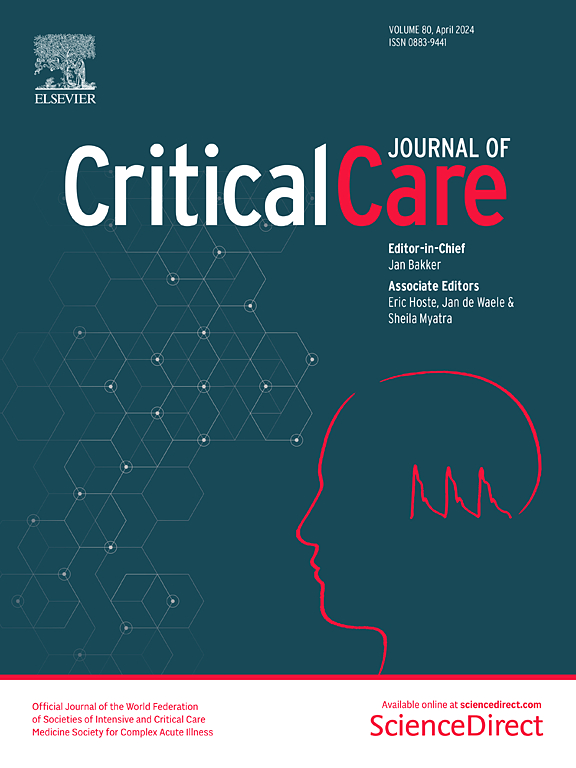Unlocking the potential of high-resolution multimodality neuromonitoring for traumatic brain injury management: lessons and insights from cases, events, and patterns
IF 8.8
1区 医学
Q1 CRITICAL CARE MEDICINE
引用次数: 0
Abstract
Multimodality neuromonitoring represents a crucial cornerstone for patient management after acute brain injury. Despite the potential of multimodality neuromonitoring (particularly high-resolution neuromonitoring data) to transform care, its full benefits are not yet universally realized. There remains a critical need to integrate the interpretation of complex patterns and indices into the real-time clinical decision-making processes. This requires a multidisciplinary approach, to evaluate and discuss the implications of observed patterns in a timely manner, ideally in close temporal proximity to their occurrence. Such a collaborative effort could enable clinicians to harness the full potential of multimodal data. In this educational case-based scoping review, we aim to provide clinicians, researchers, and healthcare professionals with detailed, compelling examples of potential applications of multimodality neuromonitoring, focused on high-resolution modalities within the field of traumatic brain injury. This case series showcases how neuromonitoring modalities such as intracranial pressure, brain tissue oxygenation, near-infrared spectroscopy, and transcranial Doppler can be integrated with cerebral microdialysis, neuroimaging and systemic physiology monitoring. The aim is to demonstrate the value of a multimodal approach based on high-resolution data and derived indices integrated in one monitoring tool, allowing for the improvement of diagnosis, monitoring, and treatment of patients with traumatic brain injury. For this purpose, key concepts are covered, and various cases have been described to illustrate how to make the most of this advanced monitoring technology.释放高分辨率多模态神经监测在创伤性脑损伤管理中的潜力:来自案例、事件和模式的经验教训和见解
多模式神经监测是急性脑损伤后患者管理的重要基石。尽管多模态神经监测(特别是高分辨率神经监测数据)有可能改变护理,但其全部益处尚未普遍实现。仍然迫切需要将复杂模式和指数的解释整合到实时临床决策过程中。这需要一种多学科的方法,及时评价和讨论观察到的模式的影响,最好是在接近其发生的时间。这种合作可以使临床医生充分利用多模式数据的潜力。在这个基于教育案例的范围审查中,我们的目标是为临床医生、研究人员和医疗保健专业人员提供详细的、引人注目的多模态神经监测潜在应用的例子,重点是创伤性脑损伤领域的高分辨率模式。本病例系列展示了如何将颅内压、脑组织氧合、近红外光谱和经颅多普勒等神经监测方式与脑微透析、神经成像和全身生理监测相结合。目的是展示基于高分辨率数据和衍生指数集成在一个监测工具中的多模式方法的价值,从而改善创伤性脑损伤患者的诊断、监测和治疗。为此,本文涵盖了关键概念,并描述了各种案例来说明如何充分利用这种先进的监控技术。
本文章由计算机程序翻译,如有差异,请以英文原文为准。
求助全文
约1分钟内获得全文
求助全文
来源期刊

Critical Care
医学-危重病医学
CiteScore
20.60
自引率
3.30%
发文量
348
审稿时长
1.5 months
期刊介绍:
Critical Care is an esteemed international medical journal that undergoes a rigorous peer-review process to maintain its high quality standards. Its primary objective is to enhance the healthcare services offered to critically ill patients. To achieve this, the journal focuses on gathering, exchanging, disseminating, and endorsing evidence-based information that is highly relevant to intensivists. By doing so, Critical Care seeks to provide a thorough and inclusive examination of the intensive care field.
 求助内容:
求助内容: 应助结果提醒方式:
应助结果提醒方式:


